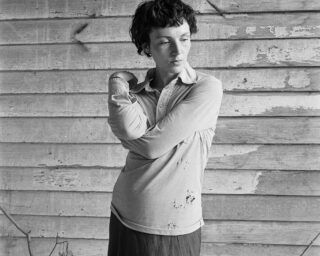Freedom of the Night: 11 Reflections on Orlando
Following the attack on the Pulse club, artists and writers consider the nightclub as a symbolic space in queer culture.
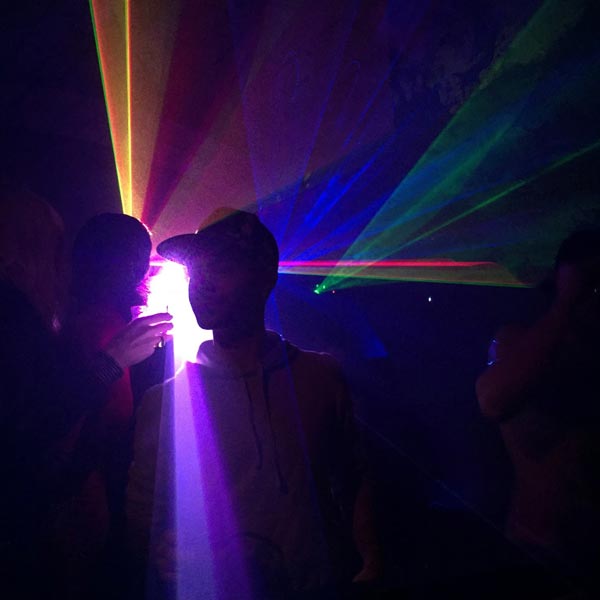
Richard Renaldi, Nightlife (Untitled #2), 2016. Courtesy the artist
Richard Renaldi
The phone buzzed in my pocket. I was at a gay nightclub in Brooklyn, wasted. I was unable, or more likely, unwilling to process the first Times alerts. How many hundreds of nightclubs have I been to like Pulse over three decades of clubbing? Has this really never happened in a gay club? San Bernardino, Newtown, Virginia Tech. They are always the same and yet always unique in their lurid, agonizing details. Marco Rubio said it was “Orlando’s turn.” It’s just a game of roulette, you see, and on Sunday morning, June 12th, this club and this community and this city’s luck ran out. Somehow, it still felt personal. I was ashamed of my impulse toward tribalism and preferential empathy. That doesn’t help. Riveted to the computer. Compulsively refreshing the Internet browser. Helpless. Entering my credit card to make a donation to some group that will take this or that fight to Congress or somehow attempt to effect change, but knowing it won’t work. It will only be a short while before some other group’s luck runs out, before the phone buzzes again with similar words, before I have to take slow, deep breaths, flick the screen off, and shove it back in my pocket.
Richard Renaldi is a photographer based in New York. His most recent book, Manhattan Sunday, will be published by Aperture in fall 2016.

Matthew Leifheit, Underwear Party, Fire Island, 2015. Courtesy the artist
Matthew Leifheit
“To make the private into something public is an action that has terrific repercussions in the pre-invented world.” —David Wojnarowicz, Postcards from America: X-Rays from Hell, 1989
I did not grow up in nightclubs. A bad dancer with social anxiety, I’ve instead found my queer family in less glamorous places. But Mitchell Sunderland, a journalist who was raised in the gay clubs of South Florida, has been taking me along on stories—ranging from no-hetero underwear parties on Fire Island to all-male strip clubs in midtown Manhattan—to photograph queers old and young, sharing shimmies in their 2(x)ist briefs. Despite the distance my camera sometimes imposes, I’ve seen that these places are crucial because they’re not about blending in, not about being in public and passing as regular, as male, as female, as OK. They are about constructing and embodying a modest fantasy of what a queer world could be and loving it for its ownness and malleability. It is the same need many photographers feel: to make a world and live in it.
Matthew Leifheit is a photographer, editor, and publisher currently pursuing his MFA at Yale.
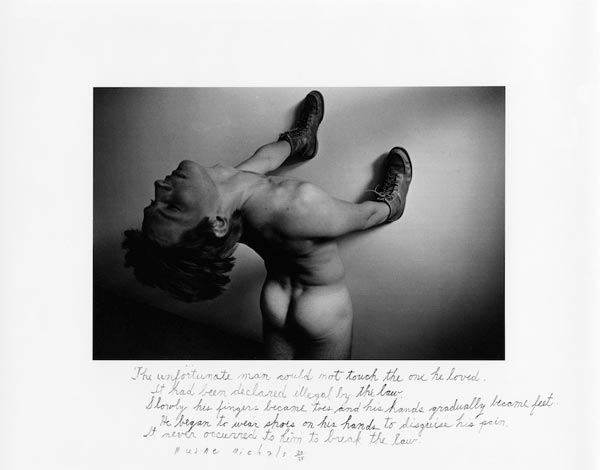
Duane Michals, The Unfortunate Man Could Not Touch the One He Loved, 1976 © Duane Michals. Courtesy DC Moore Gallery, New York
Philip Gefter
I have been despondent all week about the massacre in Orlando. Every time I see pictures of the victims, my tears erupt from a well of sadness. It seems as if, in one heinous act, the arduous years we fought for our right to be who we are, for cultural respect and legal equality, are shattered in a monstrous crime of historic proportion. In the brief, pre-AIDS era of celebratory gay life in 1970s New York, I spent so many nights in the bars of the West Village. They were our neighborhood clubs. They were fun, infused with an atmosphere of camaraderie, intrigue, romantic promise, and, ultimately, the heat of animal sexuality. In the early 1980s, I spent a lot of time in The Bar in the East Village, a bare bones single room with no décor, where artists and writers and disaffected intellectuals hung out in t-shirts and jeans, drank and smoked and listened to the best rock ’n’ roll classics on the jukebox. People talked to each other and it felt like a refuge from the conventional world. I always believed that The Bar would end up as a footnote in art history. There would be Robert Mapplethorpe, or Peter Hujar, or David Wojnarowicz, or Keith Haring, each one standing alone with a beer in one hand, a cigarette in the other, on the prowl but willing to be amused by a conversation in the meantime. This week, when I allow myself to imagine the terror inside Pulse as Omar Mateen opened fire, I think of The Bar. Such a small room packed with men just wanting to have fun. Just like Pulse.
Philip Gefter, a photography critic and former picture editor at The New York Times, is the author, most recently, of Wagstaff: Before and After Mapplethorpe (2014).
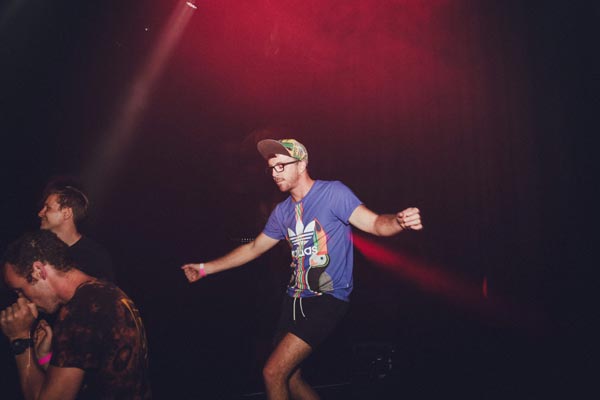
madison moore, How to Go Clubbing, Performance Space Sydney, 2016. Photograph courtesy Hospital Hill
madison moore
Think about first time you set foot into a club. What did you feel able to do? Most of us have some kind of clubbing autobiography, a timeline of memorable stories and brunch-worthy sound bites about where we’ve partied and what happened. Even if you don’t go out as much as you used to, thinking about your clubbing autobiography tells you a great deal about where you were in your life at that time, who you were dating, what your tastes were and how you’ve evolved. It’ll even show you how your city has changed because the places you used to go to probably don’t exist anymore. They’re ghosts—or condos. As for me, a queer person of color, there’s nothing I love more than dancing to techno in a completely dark room. It’s disorienting but I never feel more present. Queer night spaces in particular allow us to press “record” on parts of our autobiographies that we wouldn’t be able to see otherwise.
madison moore is a Research Associate at King’s College, University of London.

Elle Perez, Sophia Campbell backstage at Club Hippo, Baltimore, 2014. Courtesy the artist
Elle Pérez
I grew up in nightclubs, bars, and queer Latinx spaces. These spaces have been both emotional and artistic outlets for me. This photograph is from Euforia Latina, a Latin night at the former Club Hippo in Baltimore, Maryland. Like many other queer nightclubs, Club Hippo is gone now—another one lost to gentrification. What do you do when all the places where you can be yourself start to disappear? What do you do when the illusion of a safe space is shattered, first by developers, and then by gun violence? I don’t know. I don’t have any of the answers. What I do know is that even if every nightclub disappears, queer nightlife never will.
Elle Pérez teaches photography at Williams College.
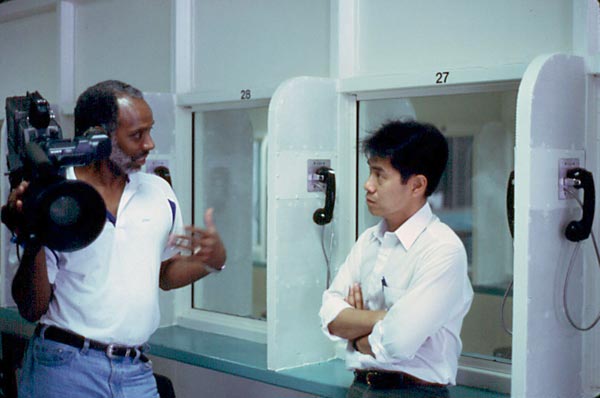
Robert Shepard (left) and Arthur Dong on the set of Licensed to Kill, 1997. Photograph by Angi Rosga. Courtesy Arthur Dong
Matt Wolf
I came out of the closet when I was fourteen years old, the night after watching Arthur Dong’s documentary Licensed to Kill (1997) on PBS. In an attempt to find meaning after his own antigay assault, Dong interviewed men from prison who have killed queer people. Their naked and disturbing testimonies are illustrated with gruesome crime scene photographs. As a teenager, the only way I could imagine resisting these annihilating forces was to make queerness the defining aspect of who I am politically, culturally, and emotionally. In the wake of the Orlando attacks, I’m asking myself again what being queer means to me today. Politically, it means that I reject conscription into the war on terror, and I denounce racism, Islamophobia, and domestic violence. Culturally, it means resisting assimilation by going to the gay bar—those real and figurative places where gay people see each other and share ideas and experiences. Emotionally it means internalizing the pain of others to the extent that their suffering becomes our suffering, and that it’s not forgotten.
Matt Wolf, a filmmaker based in New York, is the director, most recently, of Teenage (2013) and It’s Me, Hilary: The Man Who Drew Eloise (2015).
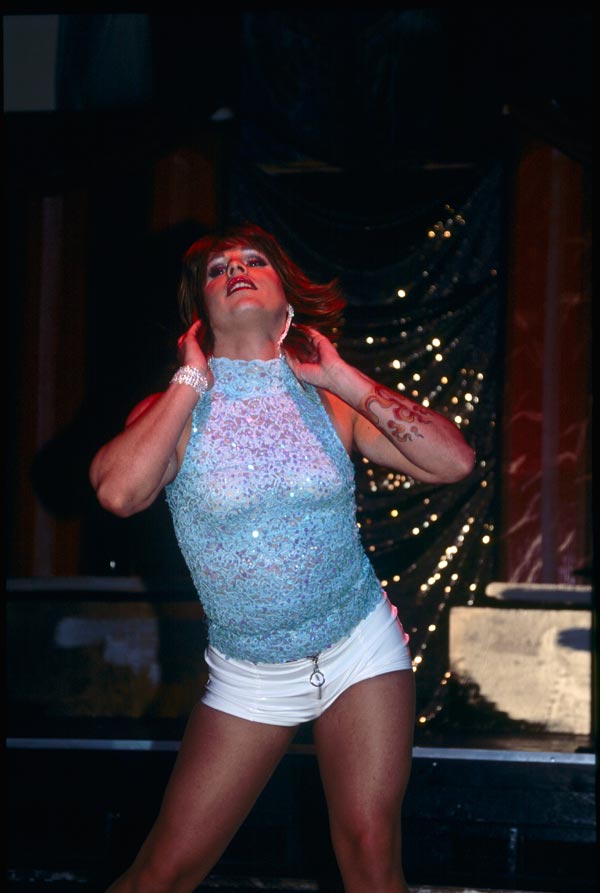
Ken Gonzales-Day, Royal Ball, Tacoma, n.d. Courtesy the artist and Luis De Jesus Los Angeles
Ken Gonzales-Day
I moved to New York City from a small town in Idaho. I wasn’t out of the closet. In my early twenties I was something of a club kid and I met Michael Alig, the now-infamous club promoter. I was young, the drinks were free, and the music was amazing. At Limelight, I saw Andy Warhol, Devine, and Lady Bunny. But my favorite memory is when I had an exhibition in the Laundry Room. It was special because it was one of the first exhibitions of my work. The art was poorly lit, but there were beautiful go-go boys dancing on top of the washing machines, and the music was pumping. Since then, I have shown in major museums, but I still think that was one of my favorite exhibitions because it taught me two things: always keep a sense of humor, and that I was not alone. You are not alone Orlando.
Ken Gonzales-Day is an artist based in Los Angeles.
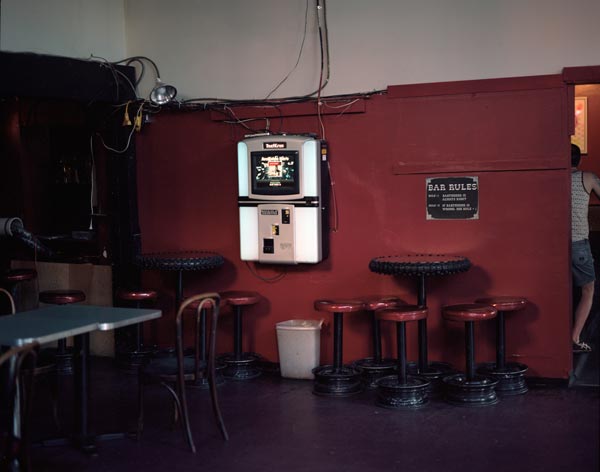
Rafael Soldi, Wildrose, Seattle, 2013 © the artist
Rafael Soldi
As a gay person, the role that your chosen family—your community—plays in your life is impossible to describe; it is paramount to your survival. Bars and clubs have for decades acted as safe places for gathering and celebrating, as well being hotbeds for political activism and organizing. It was, in fact, at a queer bar in New York, The Stonewall Inn, in 1969, that gay men, lesbians, and especially our trans brothers and sisters, street queens, and LGBTQ persons of color rioted against the police, essentially igniting the gay rights movement, what we now call “Pride.” So it is important that when we think of the shooting at the Pulse nightclub we put it in this context. When you’re a gay person, a gay bar or club is more than just a place to get a drink—for many it’s the first place we ever felt at home. They are our places of worship, in a way, and I would align this awful hate crime with the shooting at Emanuel African Methodist Episcopal Church in Charleston last year. Our church was attacked in Orlando.
Rafael Soldi is a photographer and curator based in Seattle.
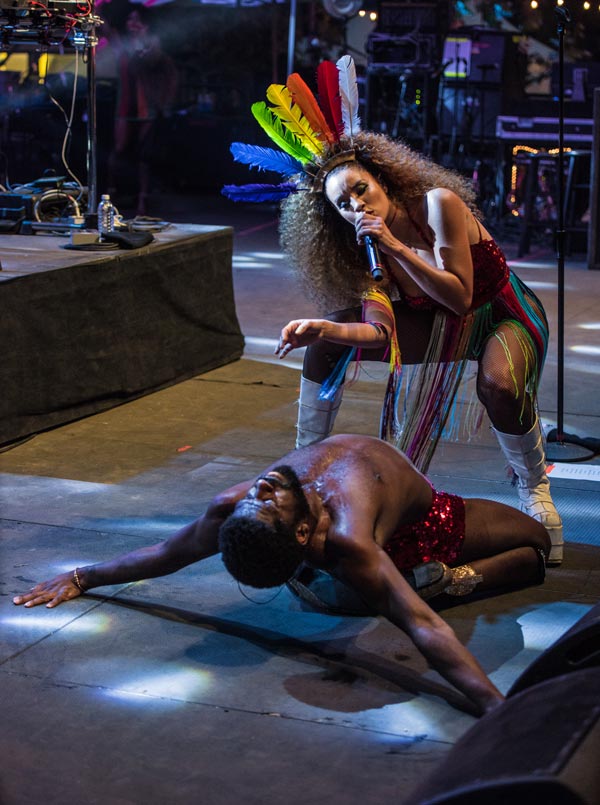
André D. Singleton performing with Lion Babe, LA Pride, June 11, 2016. Photograph by Chris Tuite © Chris Tuite Photography
André D. Singleton
I learned of the tragedy that happened in Orlando the next morning after I had performed with all of my heart, mind, body, and soul at LA Pride with the band Lion Babe. We had such an amazing and liberating experience together. Thousands of LGBTQIGN fam showing love. Dancing. Singing. Talking. Being. I have never had a performance like this one. Being my most authentic self on stage. Using my body to tell stories and celebrate my birth, rebirth, life, and even deaths. Yes, deaths. Because, as a LGBTQIGN person, I feel we are constantly dying. And as we die, we are born again. The massacre in Orlando immediately made me think of Sufi poet Rumi’s words: “Dance, when you’re broken open. Dance, if you’ve torn the bandage off. Dance in the middle of the fighting. Dance in your blood. Dance when you’re perfectly free.” The attack has definitely killed very important parts of me. But it’s given birth to new parts of me. I have fifty-plus brothers and sisters to dance and create even harder, deeper, unapologetically for. Axé.
André D. Singleton is an artist based in Brooklyn and the co-founder of The Very Black Project.
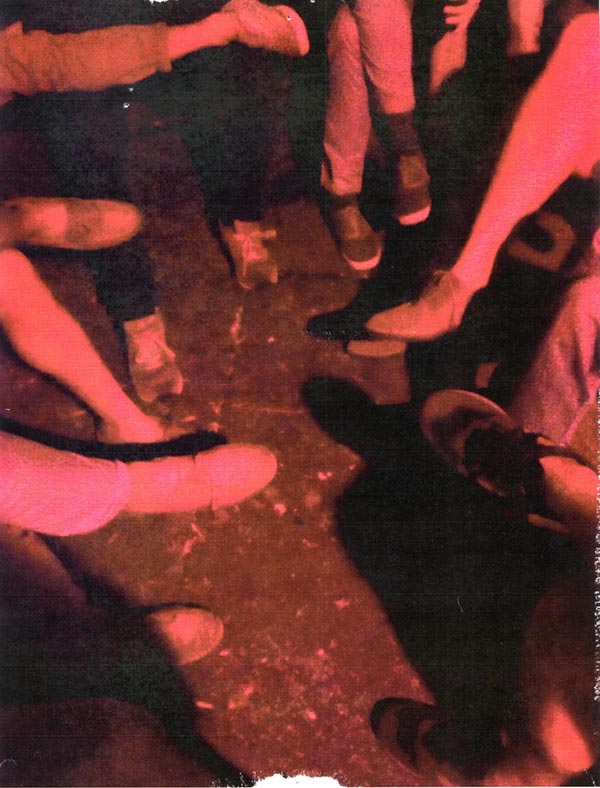
Paul Mpagi Sepuya, 144 Powers, 2014–15. Courtesy the artist
Paul Mpagi Sepuya
In my work lately I have been thinking about shared subjectivity, recognition through cruising, and what Gordon Hall calls “mutual objectification” in their essay Party Friends (2015). I think about the positive promiscuous creative, sexual, and platonic encounters that the club extends out from there to permeate the day-to-day exchanges queer life. It wasn’t until I left New York two years ago after fourteen years there—my late-teens to early thirties—that I realized how critical the learned language of the club and all of the clubs I inhabited were to the conceptualizing, encoding, producing, and distributing of my projects. That half-degree of separation between subject and viewer, sparked across the dance floor and completed in a glance across the train platform. It is a queer photographic production, that loving “mutual objectification” between collective strangers united in desire and affirmation. The club is art embodied and performed, a process that allows us to continually redefine our relationships to each other, the images we create, and how we reincorporate or otherwise respond in the fullness of our lives together.
Paul Mpagi Sepuya is an artist based in Los Angeles.

Christian Dietkus Lord, Zackary Drucker at the Soho Grand, New York, August 25, 2005. Courtesy Zackary Drucker Studio
Zackary Drucker
This atrocity is a reminder that our lives are equally important. I spent the first decade of my adult years in nightlife. I always felt like there was an unregulated and anything-is-possible element in nightlife, which is why people are drawn to it. I have seen violence erupt in a club more than once and have also been a target of violence in a club. Wherever unrestrained desire is expressed, there also exists an impulse to destroy that freedom; one person’s utopia is another’s dystopia. Without accepting each other’s difference—or our own for that matter—we lose our humanity. I don’t want to live in a Mad Max future with more guns. A world in which psychopaths can legally buy weapons designed to kill masses of people is a clear vision of hell to me. LGBT uprisings and activism have originated directly from nightlife; so many significant moments in our history have occurred in bars and clubs. I hope that queer communities in the future will not be relegated to bars and clubs, but will be everywhere.
Zackary Drucker is an artist based in Los Angeles and co-producer of the Amazon series Transparent.










